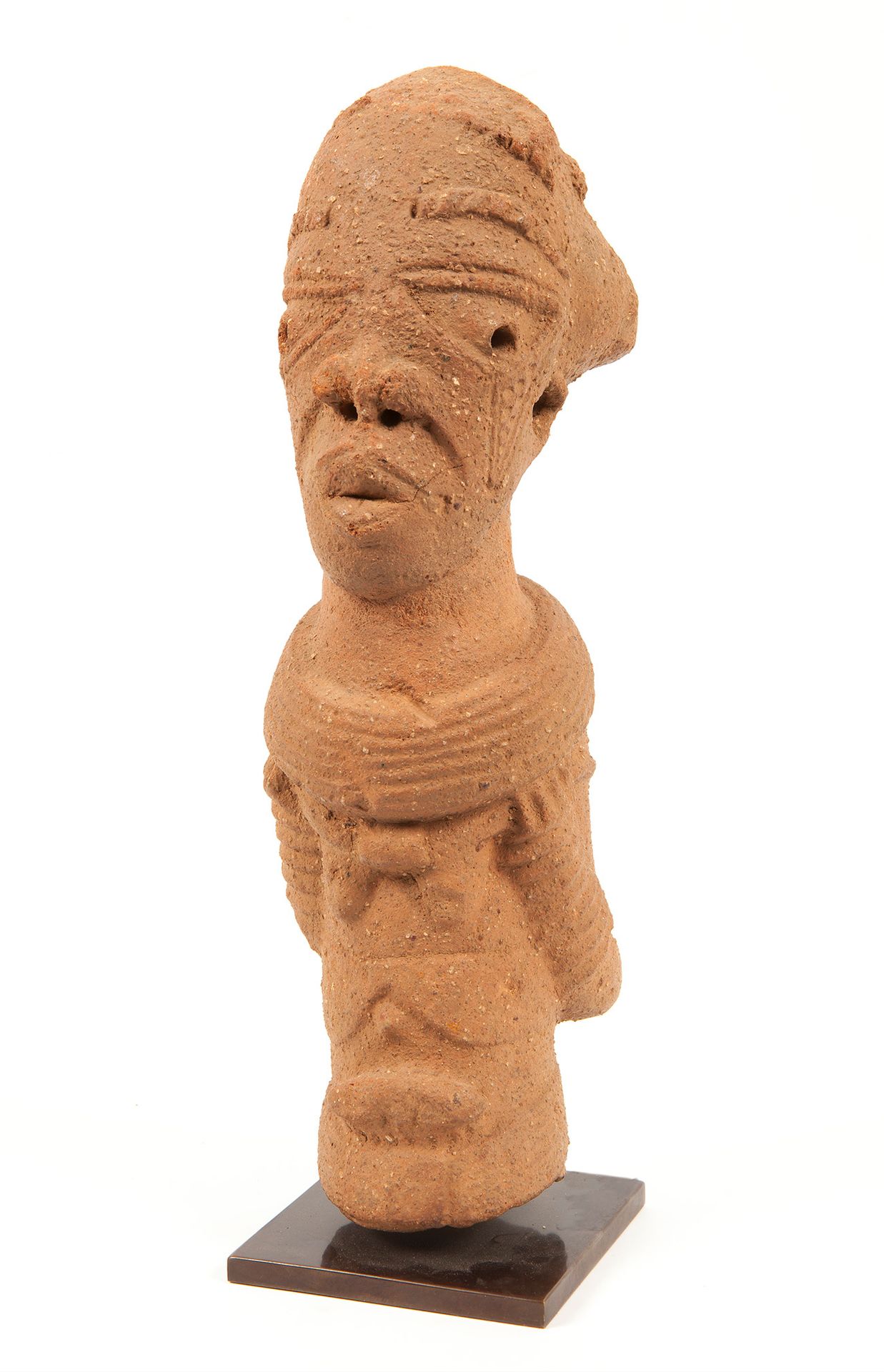Description
Standing figure. Nok culture, Nigeria, 5th century BC. - 5th century AD. Terracotta. Measurements: 35 cm high. The Nok culture appeared in Nigeria around 500 BC, and disappeared at the end of the first millennium AD, for reasons unknown until now. Today, the social structure of this culture seems extremely advanced, considering its relative remoteness from other major cultures, and also considering that the rest of West Africa was, at that time, assimilating the Neolithic. Some theories connect the Nok with Ancient Egypt. Moreover, this culture is considered the most refined producer of terracotta sculptures in sub-Saharan Africa. The theory that the Nok were descendants of the Egyptians would partly explain the maturity of their culture and the refinement of their terracotta figures, but this is a nineteenth-century explanation for which there is no evidence. The pieces of Nok art that have been preserved over time, almost all of which are incomplete, are terracottas of spectacular elegance, denoting a high degree of technological and artistic skill in both the modelling of the clay and the firing of the pottery. The themes are generally figurative, depicting what appear to be leaders and ancestors, as well as funerary stelae and amulets. This exquisite legacy has made the Nok culture famous throughout the world, and is particularly notable for the stylised and variously positioned male and female figurines, wearing numerous jewels and characterised by a disproportionately large head, adorned with meticulously detailed hairstyles. Unlike the one presented here, the Nok figures are usually broken, as they come from alluvial strata formed and destroyed by the erosion of sporadic floods. Rarely are pieces preserved intact, which gives them a very high value not only intrinsically, but also commercially.
56
Standing figure. Nok culture, Nigeria, 5th century BC. - 5th century AD. Terracotta. Measurements: 35 cm high. The Nok culture appeared in Nigeria around 500 BC, and disappeared at the end of the first millennium AD, for reasons unknown until now. Today, the social structure of this culture seems extremely advanced, considering its relative remoteness from other major cultures, and also considering that the rest of West Africa was, at that time, assimilating the Neolithic. Some theories connect the Nok with Ancient Egypt. Moreover, this culture is considered the most refined producer of terracotta sculptures in sub-Saharan Africa. The theory that the Nok were descendants of the Egyptians would partly explain the maturity of their culture and the refinement of their terracotta figures, but this is a nineteenth-century explanation for which there is no evidence. The pieces of Nok art that have been preserved over time, almost all of which are incomplete, are terracottas of spectacular elegance, denoting a high degree of technological and artistic skill in both the modelling of the clay and the firing of the pottery. The themes are generally figurative, depicting what appear to be leaders and ancestors, as well as funerary stelae and amulets. This exquisite legacy has made the Nok culture famous throughout the world, and is particularly notable for the stylised and variously positioned male and female figurines, wearing numerous jewels and characterised by a disproportionately large head, adorned with meticulously detailed hairstyles. Unlike the one presented here, the Nok figures are usually broken, as they come from alluvial strata formed and destroyed by the erosion of sporadic floods. Rarely are pieces preserved intact, which gives them a very high value not only intrinsically, but also commercially.
You may also like
